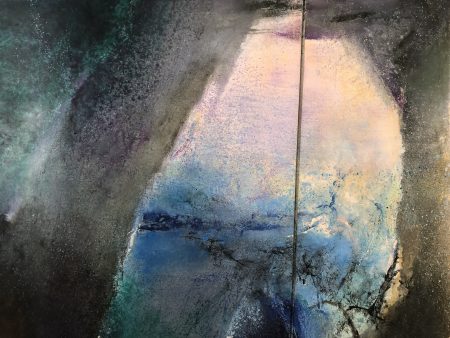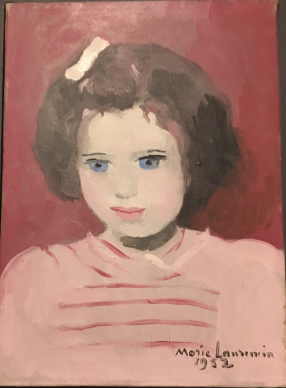Moise de Camondo
First it was a house. From 1911 Moïse de Camondo used his mansion located in the Plaine-Monceau district of Paris as a place to house his collection of French art. Then it became a museum.
La belle époque

In 1935 he donated the whole site, including its contents, to the French state. It is a snapshot of what we would call “belle epoque” style, with its furnishings from the King Louis era, its paintings, tapestries and rugs, its porcelain pieces and also its books.
A time capsule

The exceptional residence looks out over the Parc Monceau like a giant crystallized time capsule paying homage to Nissim de Camondo. Nissim, Moïse’s son, died in combat in 1917. The Second World War would later wipe out the rest of the Camondo family, who were murdered in Auschwitz.
Olivier Gabet
Today the Musée Nissim de Camondo is one of the most beautiful small museums in the world. It is often overlooked in the Parisian cultural itinerary, but Olivier Gabet who runs the institution, along with the Musée des Arts Décoratifs, decided to awaken this sleeping beauty by suggesting to the writer (1) and artist Edmund de Waal that he collaborate with the museum (See here an other interview of Olivier Gabet about Christian Dior Art Dealer).
Delicate touches
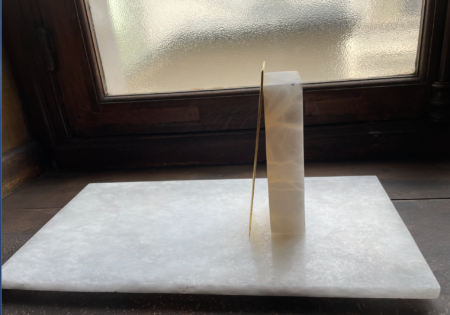
Edmund de Waal
The result is his guided tour, featuring delicate touches by de Waal sprinkled across the three floors, the large drawing rooms and even the secret rooms (which can be accessed in the presence of a guide), plus a book written by Edmund de Waal during lockdown “Letters to Camondo”, comprised of letters to a recipient who will never respond: Moïse de Camondo.
Dear Friend
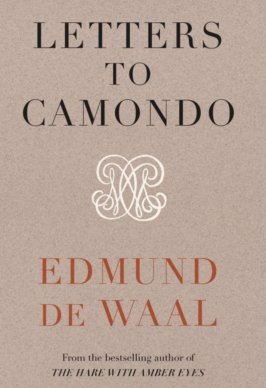
“Dear Friend, I’m doing an archive of your archive.I find inventories, carbon copies, auction catalogues, receipt and invoices, memoranda, wills and testaments, telegrams, newspaper announcements, cards of condolence, seating plans and menus, scores, opera programmes, sketches, bank records, hunting notebooks, photographs of artworks, photographs of the family, photographs of gravestones, account books, notebooks of acquisitions.”
A museum like a memorial

De Waal sees the museum as a memorial, which he reveals through whispers and countless minor touches, with the vocabulary that is unique to him, that of memory.
Writing on porcelain
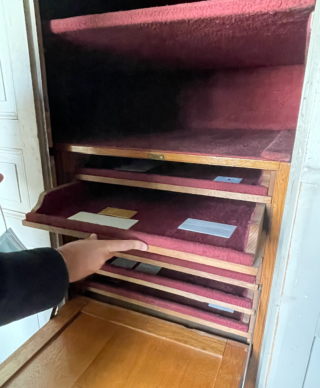
Edmund de Waal
He writes on porcelain, he uses flecks of gold to repair cracks in wood or stone, but he also breaks the porcelain which then becomes like embers of memory, a symbol of the wounds of the Camondo family.
Frick collection, Venetian Ghetto
He’s previously been involved with historical sites such as the Frick collection in New York and the Venetian Ghetto in 2019, but here his gesture is like a cloud that disperses throughout this place of remembrance.
Blocks of stones
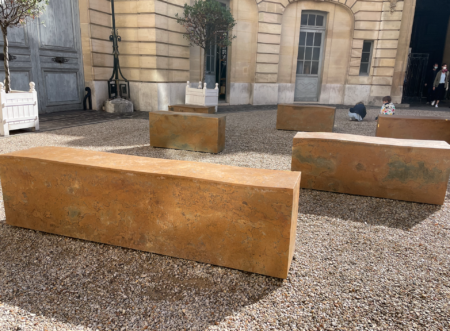
The only massive imprint of his presence is in the courtyard of the museum, where blocks of stone from a quarry in Oxfordshire – which was also frequented by Henry Moore in his time – in a colour that gives the illusion of steel, are arranged on the ground. These are minimal forms that resemble unmarked stele, or simply benches. The artist invites people to sit on them and touch them. And it’s true, they are soft.
Parallel life

Although he may not want to recognize it, Edmund de Waal has a parallel life. This is located in the past, driven by the Ephrussi branch of his family who were friends of the Camondos. “My grandmother visited her cousins here in the 1920s, they lived ten houses up from the museum,” he says.
I know your street rather well

Edmund spent a lot of time in the attic of the building, where he found the Camondo archives. He writes on the back of his book, as an invitation to accompany him into the past:
“Dear friend, As you may have guessed by now, I am not in your house by accident. I know your street rather well. I would venture to say, if I can depart for a moment from my English reserve, that I know it very well (…) It all began twenty years ago, on a morning very like this one…” (2)
Until 15 May 2021. https://madparis.fr/Edmund-de-Waal-Lettres-a-Camondo-2036
(1) His global bestseller published in 2010 is The Hare with Amber Eyes.
(2) This quote is translated from the French.
Donating=Supporting

Support independent news on art.
Your contribution : Make a monthly commitment to support JB Reports or a one off contribution as and when you feel like it. Choose the option that suits you best.
Need to cancel a recurring donation? Please go here.
The donation is considered to be a subscription for a fee set by the donor and for a duration also set by the donor.


